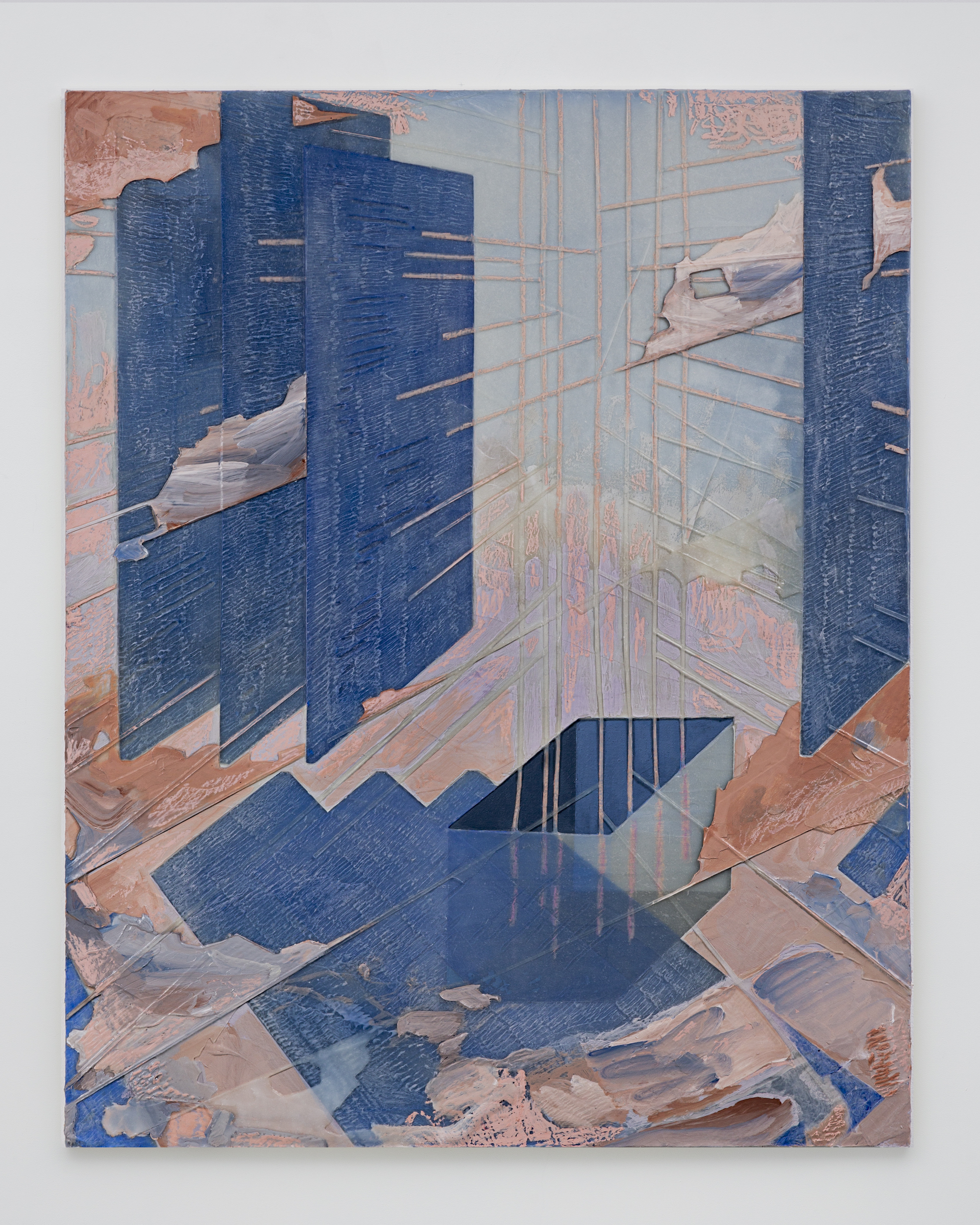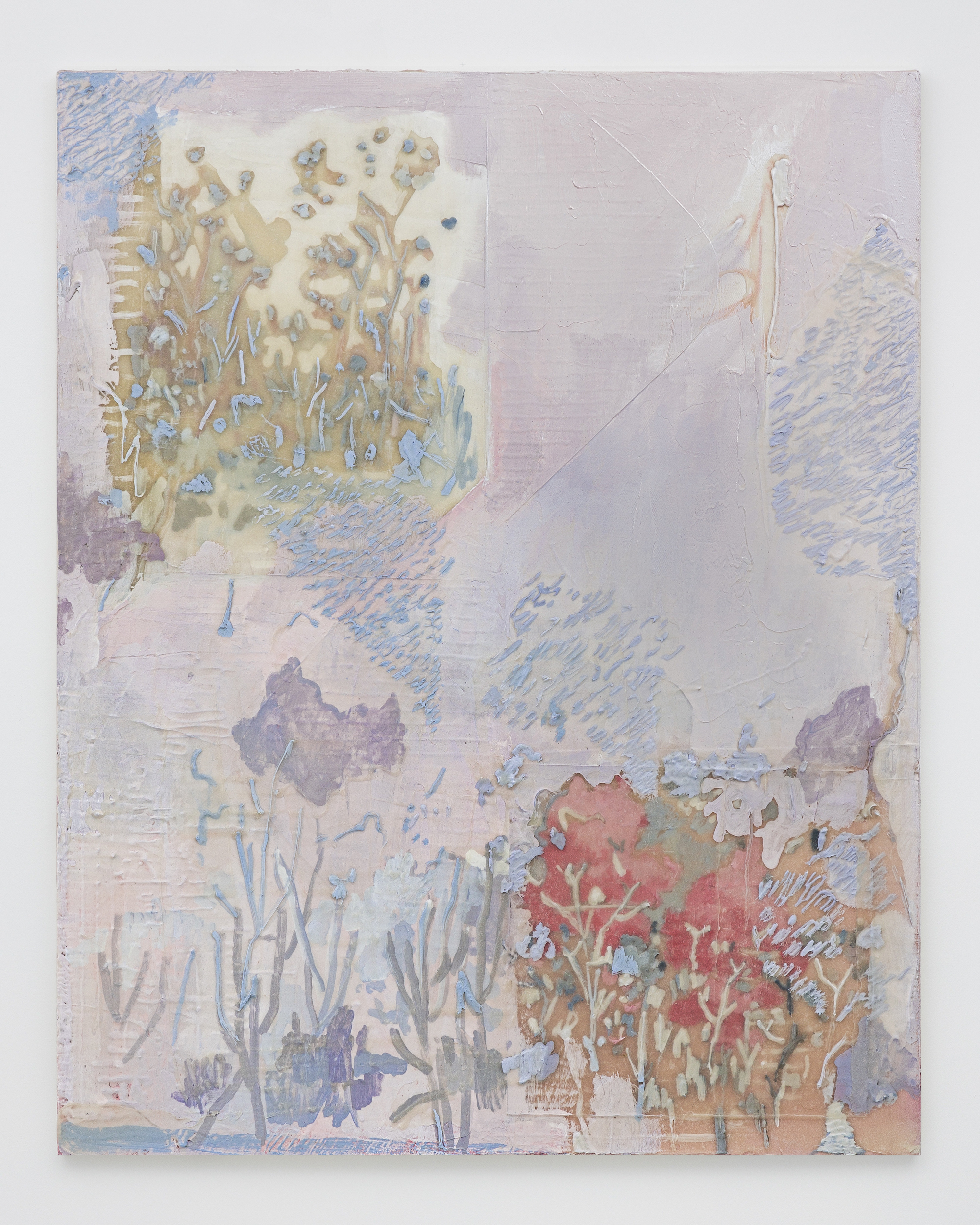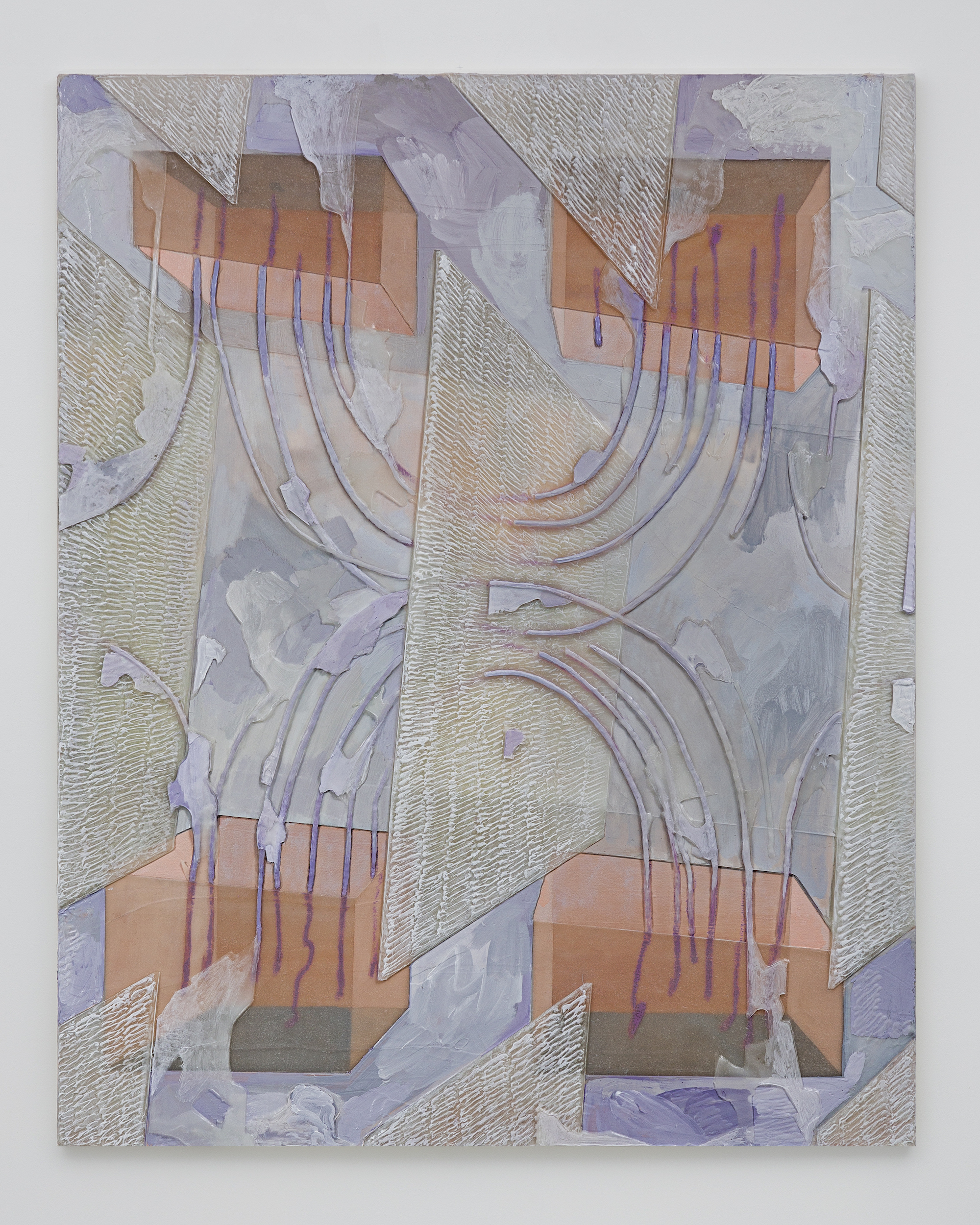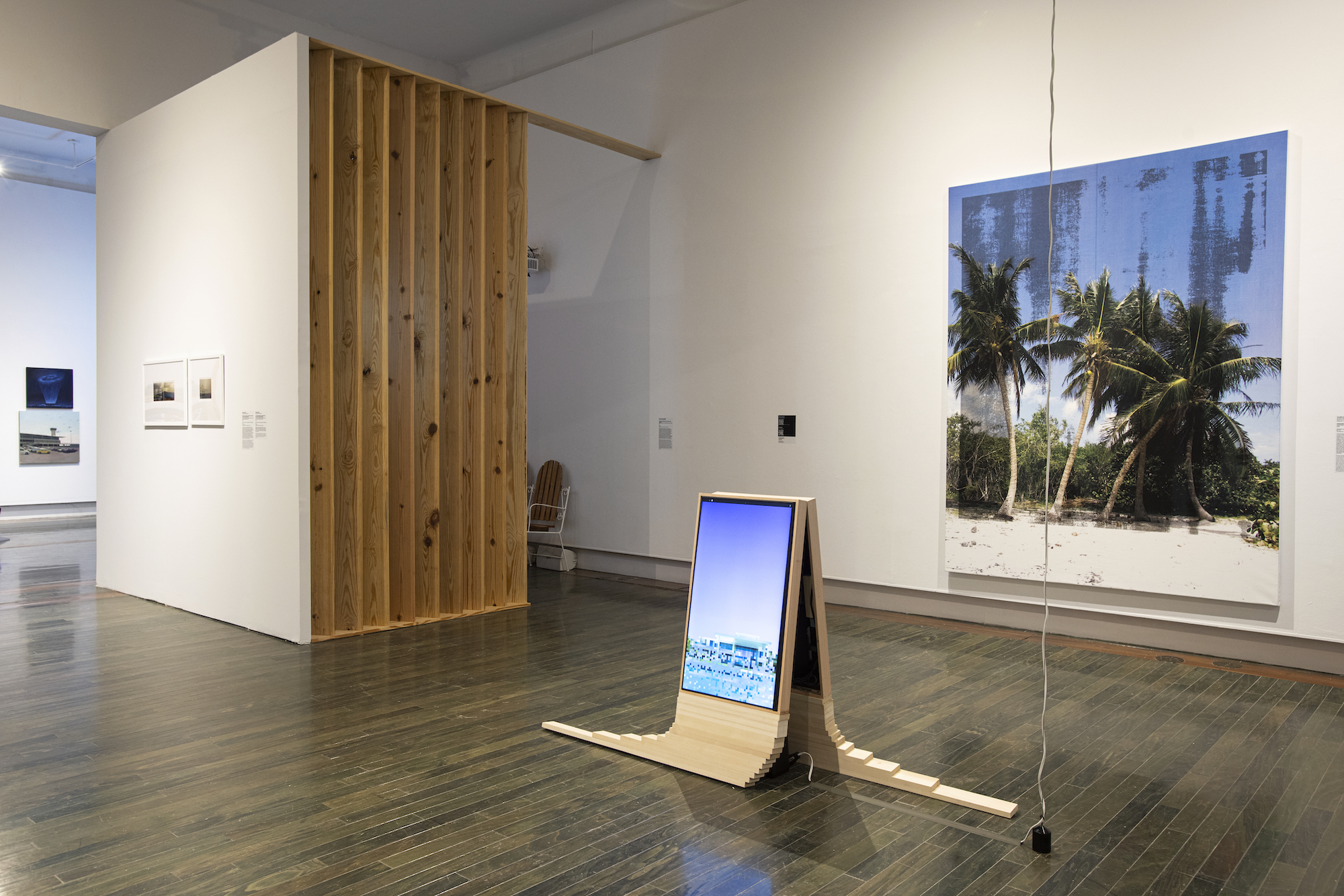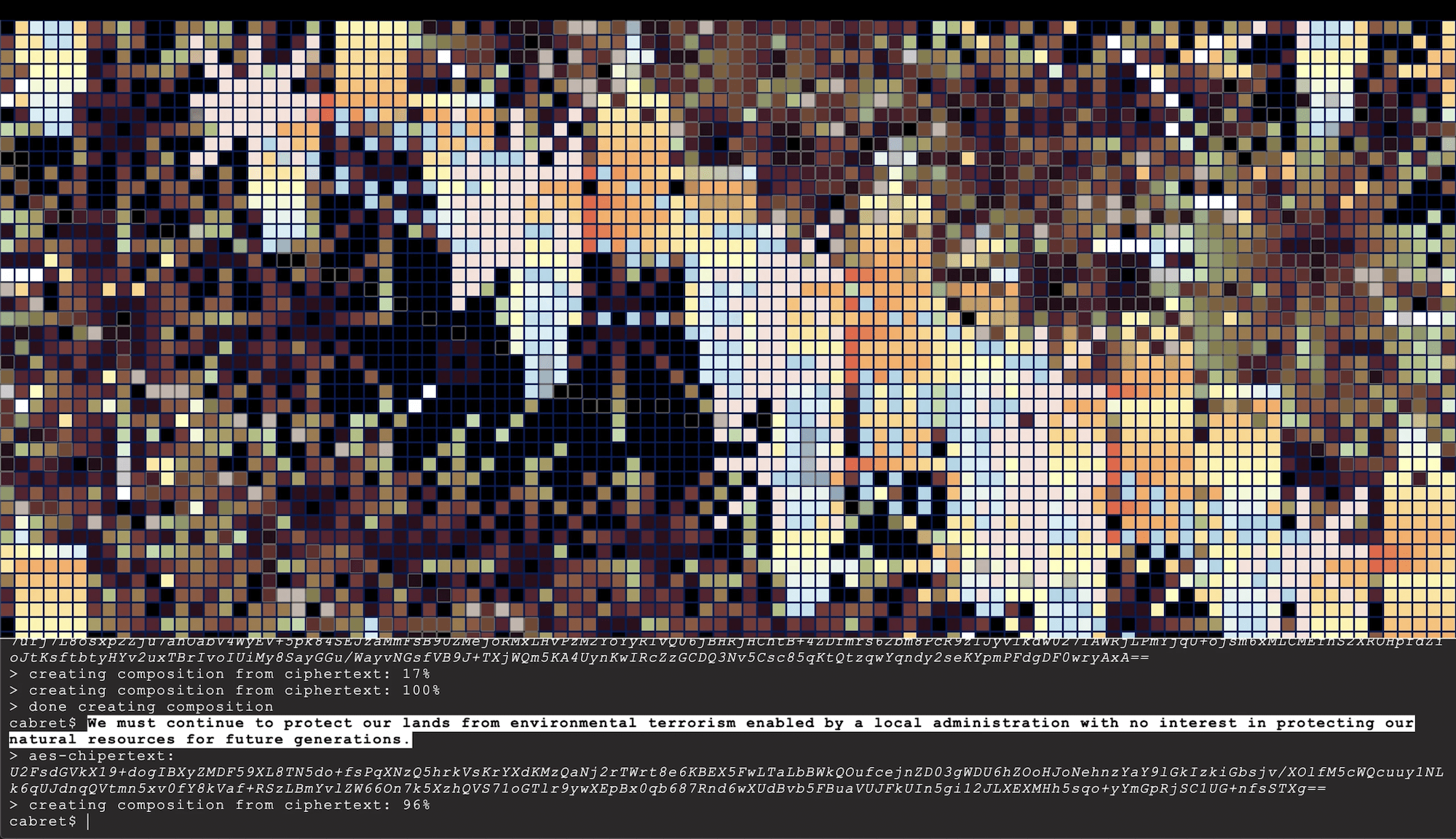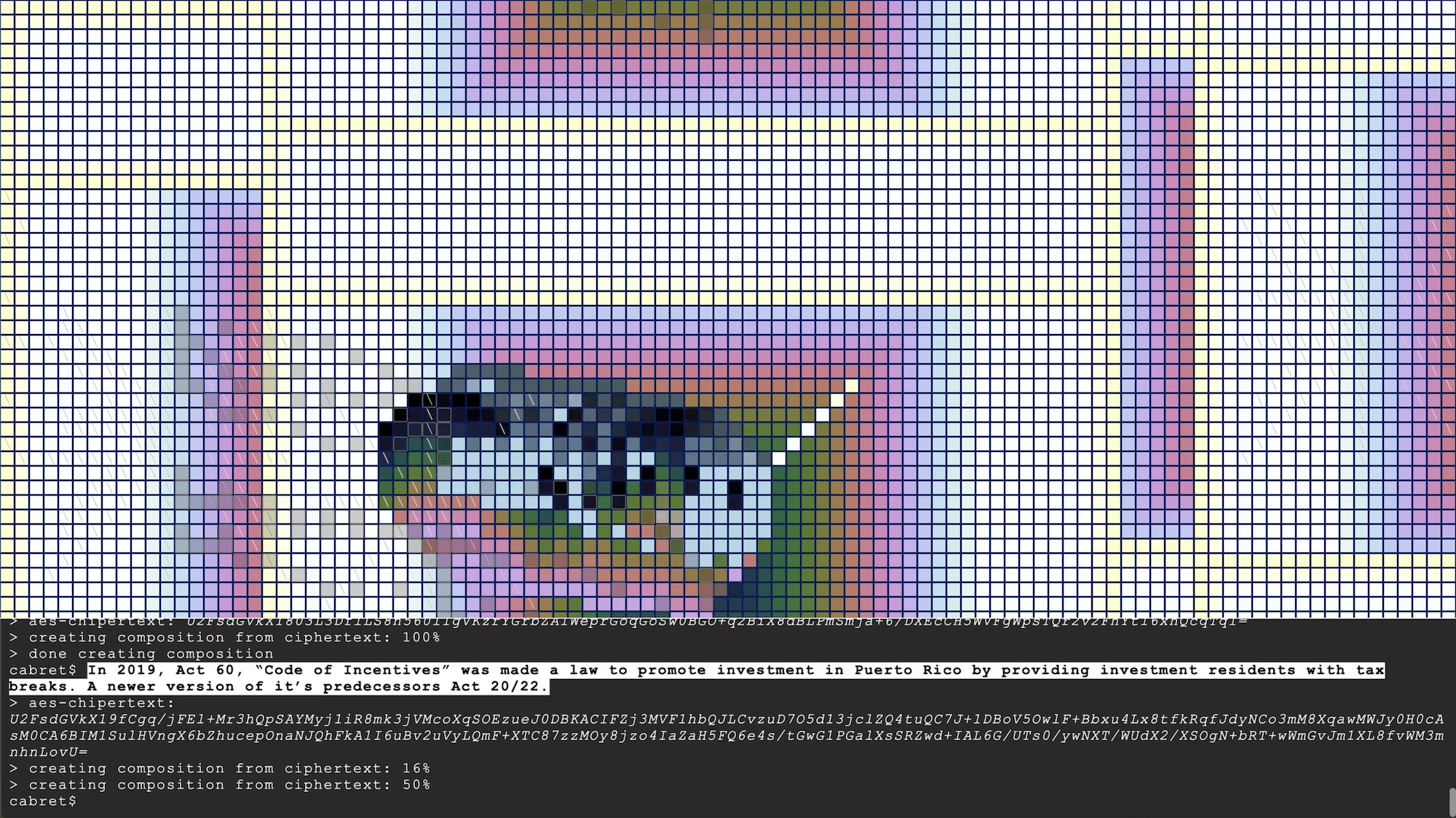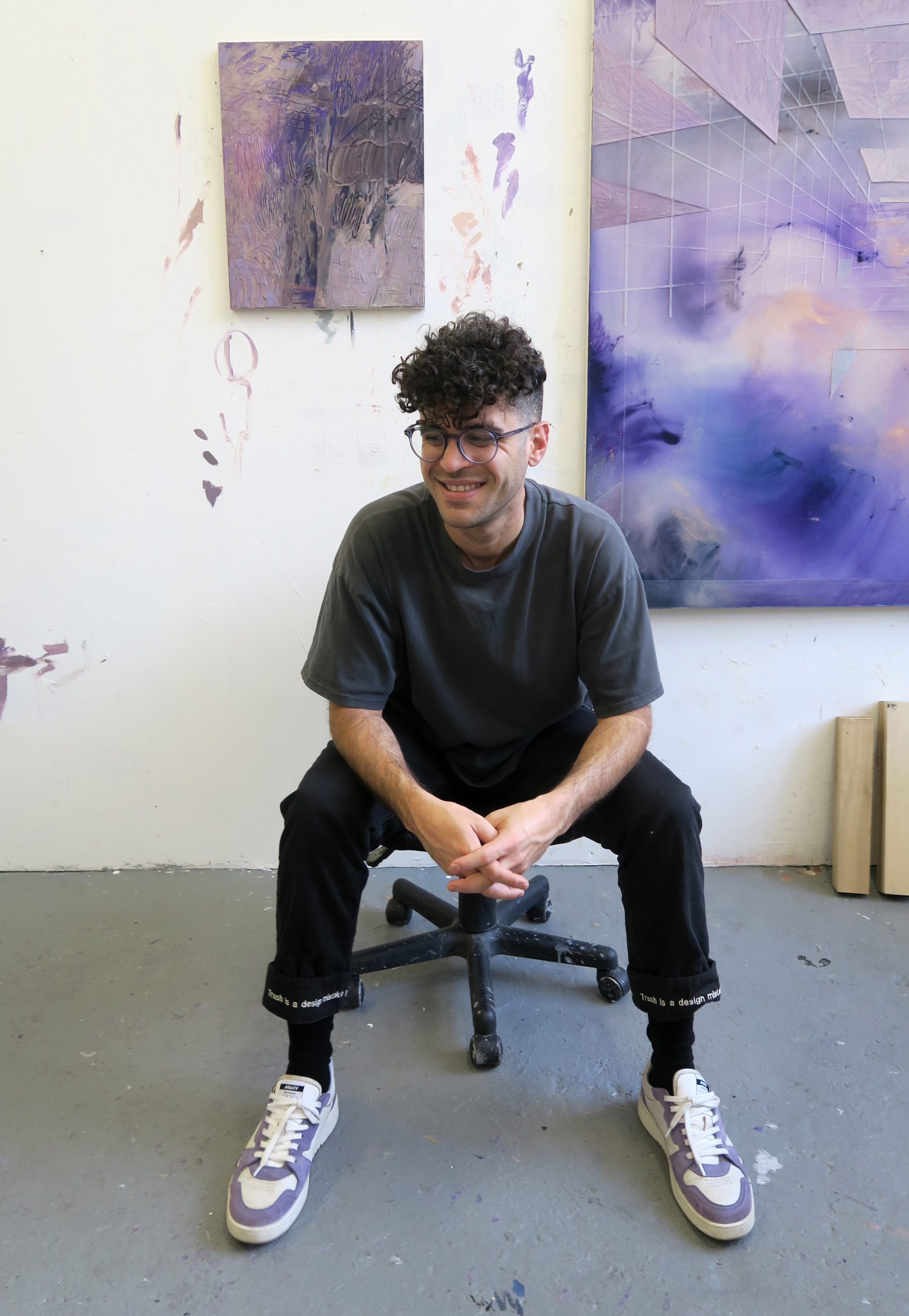
Where things happen #13— April 2023
The possible relations and integrations between traditional mediums such as painting and the new creative opportunities offered by the digital space, are very much at the center of today’s curatorial and museum discussion.
However, very few artists prove to work so genuinely at this intersection as Puerto Rico-born, New York-based Ricardo Cabret.
Unsurprisingly, Cabret’s background is not in the arts: he studied software engineering, which for the past 10 years has been and is still his main occupation.
Nevertheless, as he tells us at the beginning of our visit, he has always been around artists and drawn to painting, which led him to pursue a minor in painting, splitting his time and dedicating hours everyday to it.
His studio also acts as his working space, where these two apparently distant universes coexist: working remotely he intently organizes his daily schedule equally distributing his time between these two callings, in a space where they can be organically intertwined and combined.
As his studio practice is positioned at a unique personal and intellectual convergence, it comes quite naturally for Cabret to bring into his art also the sophisticated knowledge he has in programming and coding.
This is what sets his practice apart from other artists working today in the painting and digital intersection, or singularly in digital art: where the artist pounds away daily into the data and code infrastructure that has integrated itself into our lives. Cabret engages in his work a critical investigation of the tensions existing between technology and the human and natural world.
Specifically, the artist is interested in bringing to view the invisible data networks and their architecture that exist all around us, integrating the anthropological and natural landscape that is ultimately controlled, read, and predicted by virtual infrastructure.
In his pursuit of this, Cabret creates process-based, complex multilayered abstract paintings which aim to mirror, both in their aesthetic appearance and process, the abstractness of the math and coding that allow us to turn complex series numbers and data into visual information, through varied devices and software.
The first layer of his canvases generally consist in what appears to be an intuitive gestural abstraction that concentrates on specific chroma and atmospheres.
In contrast, as Cabret would later show me, the first layer is actually inspired by random animations generated by his computer once he types a specific code: in a mix of control and intuition, rationality and randomness the computer animation unveils the mechanisms behind the digital space of information and images we are all immersed in.
Then, in a time consuming process, Cabret adds waxy, translucent layers made of gel polymer and marble dust.
This mixture of material the artist concocted to avoid traditional wax and oil-based encaustic techniques, after acknowledging his intolerance for oils.
Despite being forced by personal necessity, this technical choice and new combination allow Cabret to further expand and challenge traditional painting practices, and offers an original solution that enhances the plastic and structural effect of these seemingly invisible but simultaneously transparent infrastructures.
In this way, these invisible networks materialize on the canvas with a ghostly presence as being both solid and virtual at the same time, superimposed on blurred and barely identifiable scenes combining landscapes of endangered Caribbean territories, referencing memories of Puerto Rico.
This becomes clearer looking at a larger work Cabret in the studio, leaving soon for his upcoming show in May at Kohn Gallery in Los Angeles: here the coast line was depicted in a more recognizably, but likewise haunted by blurred presences of skyscrapers and other buildings alternating with the natural landscape.
Looking deeper at this work, a series of translucent and curvilinear elements traverse signaling the consistent web of economical and financial data networks that rule on these human altered physical landscapes, victims of the unstoppable and unregulated urban development and investments.
In this sense, both his technical choices and the process, Cabret’s work significantly manifests a process of revealing and concealing information happening between the physical and a digital space, revealing the system of control and power that operates in conjunction with today’s world.
Nevertheless, being immersed in the computing and technological world, the artist appears less interested in a one-way critique of the threats and criticalities of its potential misuse.
Cabret is instead involved in the passionate exploration of the creative potential of technology, and in particular this way data and code-based practice leads to free and unexpected creations.
Coding, and the web space itself, is approached by the artist as a resourceful medium to openly explore and challenge, test its functionalities, changeability and dynamics.
For this reason, Cabret never paired his paintings with his generative art based digital, software-based abstract works, which are usually rather presented as video projections or installations in space.
Furthermore, the fluid and open-sourced nature of his software-based works expand Cabret’s practice towards performative and site-specific approaches: compounded by the artist as online interventions happening in a specific virtual space and time, characterized by the same unrepeatability of formal configurations that we can find in happenings and performances.
Even deeper into Cabret’s practice his sculptural production sits at an interesting exchange between the use of organic materials such as wood and highly technological inputs of the software-based animation on the screens and their digitally-designed structure.
Getting into conversation surrounding the net, internet art, and digital art the artist shows a profound knowledge of its evolution since the early 90s, as well as a deep awareness of the position he wants his practice lie in this history.
He tells me he sees his works as a nod to Net Art by open-sourcing code-based abstractions that invite the viewer to tinker and play with this technology, to discover both their creative potential but also their limits
The term Net art is, in fact, something very different from many recent declinations of the so-called “digital art”, as the artist explains to me: net art is, in fact, a site-specific art form bound to its own presence and impact on the Internet, and therefore needs it to exist to express it.
It is conceived through the internet, on the internet, and for the internet.
Net art draws its own materials directly from the web, to analyze, challenge, manipulate and even ironize it, to question and demystify its dynamics and functionalities behind this technological miracle.
Cabret confesses that for him, successful “digital art” should interrogate the device and the process that allow these digital images to be created and exist, which is probably the most relevant aspect to interrogate both in terms of visual culture and implications in the society.
Not by chance, one of the people that Cabret mentioned multiple times during our conversation, someone he deeply admires, is the pioneer of computer graphics John Whitney, one of the first to identify in pixels the first common denominator building block to creatively imagining new images and structures within the computer frame.
Whitney’s early explorations of seemingly randomly bouncing pixels recombining in regular geometric configurations, shapes and patterns lead him to the concept of digital harmony, drawing parallels between it and the point of light Klee once talked about as something that then moves, draws a line, which then creates volume. This legacy and the aesthetic reflections on the digital realm ultimately seems to be the ground for Cabret’s approach to the medium and his research.
However, he also admits some of criticalites implied in generative art and the code-based abstractions he creates: they at times appear too loosely fluid and intangible as creations to be able to be ultimately crystallized within the traditional concept of artwork.
Their unpredictability and open format also raise a series of questions in terms of rights and authenticity, and how to protect those.
Nevertheless, these aesthetic concerns also seem to have been challenged by disruptive artists such as Duchamp, as first, following him with a host of conceptual or process-based art. By now, we can take for granted that idea prevails over the physical and factual object as artwork, and this can often be protected and certified as instructions or words by its author when too immaterial.
This is also what critic Robert Adrian pointedly observed, commenting on both the aesthetic and conceptual contact point between digital and conceptual art, when he commented: ”An electronic space in particular, is very easy to imagine once you have grasped the idea of conceptual space for an artwork”
In Cabret’s works, the question now is whether this “idea” to protect and consider the true essence of the artwork should be the code activating the process, or rather the intuition and willingness of the artist to give the computer this specific input to generate the artwork.
Regardless of outcomes, this issue already appears to perfectly mirror some of the most important concerns that should be investigated today when analyzing the relations between human intellect and creativity, and new technologies and machines.
In the culmination, by translating the experience of these digital technologies and abstract codes into a visual language, Cabret succeeds in demystifying digital and technology based processes, embarking on relevant discussions of how they work, interact, mediate and influence our daily perception and experience of the world.
However, these aesthetic concerns also seem to have been challenged by disruptive artists such as Duchamp, as first, following him with a host of conceptual or process-based art. By now, we can take for granted that idea prevails over the physical and factual object as artwork, and this can often be protected and certified as instructions or words by its author when too immaterial.
This is also what critic Robert Adrian pointedly observed, commenting on both the aesthetic and conceptual contact point between digital and conceptual art, when he commented: ”An electronic space in particular, is very easy to imagine once you have grasped the idea of conceptual space for an artwork”
In Cabret’s works, the question now is whether this “idea” to protect and consider the true essence of the artwork should be the code activating the process, or rather the intuition and willingness of the artist to give the computer this specific input to generate the artwork.
Regardless of outcomes, this issue already appears to perfectly mirror some of the most important concerns that should be investigated today when analyzing the relations between human intellect and creativity, and new technologies and machines one.
In the culmination, by translating the experience of these digital technologies and abstract codes into a visual language, Cabret succeeds in demystifying digital and technology based processes, embarking on relevant discussions of how they work, interact, mediate and influence our daily perception and experience of the world.






















